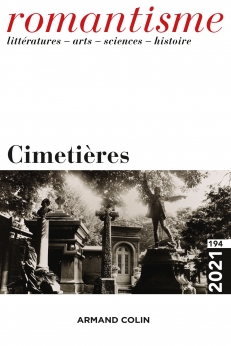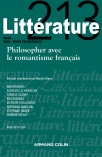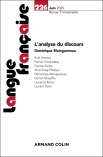
ROMANTISME N°194 (4/2021)
Pour acheter ce numéro, contactez-nous
Recevez les numéros de l'année en cours et accédez à l'intégralité des articles en ligne.
L’approche heinéenne de l’art pictural, moins connue que ses critiques musicales, préfigure l’actuelle histoire culturelle. Heine examine en effet les variantes nationales de la peinture, de l’Allemagne (Nazaréens, paysagistes « nordiques »), avec sa misère historique, à la France (David, Delacroix), terre de la politique et de la liberté, en passant par l’Italie et les Pays-Bas, pays de la beauté et du bonheur de vivre.Mais aussi l’histoire générale de la peinture, en lien avec l’histoire de l’Europe, des Lumières aux années 1830 et 1840, celle de la bourgeoisie financière triomphante, en passant par la phase « héroïque » de la Révolution et de l’Empire. Par-delà ce panorama contrasté, Heine pose la double question d’un « art nouveau », lié au changement politique de 1830, et du « surnaturalisme » comme dépassement de la vieille théorie de l’art comme « imitation de la nature ».
Heine’s work on the visual arts, not as well-known as his critical pieces on music, foreshadows contemporary cultural history. Heine analyses national variants in painting, from Germany (Nazarenes, « northern » landscape artists) with its historical misery, to France (David, Delacroix), the land of politics and freedom, through Italy and the Low Countries, lands of beauty and the joy of living. But he also provides an overview of painting’s general history with its links to the history of Europe, from the Enlightenment to the 1830s and 1840s, the history of the triumph of a financial bourgeoisie, taking in the « heroic » phases of Revolution and Empire. But Heine does more than highlight these various contrasts in a panoramic account of painting’s history, he also opens onto both the question of a « new art » linked to the political changes of 1830, and to that of « supernaturalism » as a way to transcend the old understanding of art as « an imitation of nature ».

